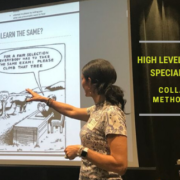Self-Sufficiency: For the Elementary School Age Group

Raising a self-sufficient child is essential for emotional development, as independence boosts confidence, promotes responsibility and problem-solving skills, and rewards determination. Independence and self-sufficiency are life skills that should be taught earlier, rather than later. If not learned during childhood, acquiring independence can be like putting toothpaste back in the tube.
Take a step back
A more hands-off approach to certain tasks when attempting to teach self-sufficiency shows children that you believe in their capabilities. When you take a step back and let them try on their own, children gain a sense of confidence. You are demonstrating to them that you believe in their abilities to accomplish something on their own.
Furthermore, taking a step back helps children to develop problem-solving skills. Of course, they feel reassured by the fact that you are there if they need you, but trying something on their own teaches them how to assess, approach, and tackle a problem. With every trial and error, a new skill or lesson emerges. Children who take on a task independently will also be more willing to take risks. The confidence that they are finding allows them to step outside of their comfort zone a little further. They are comforted by the fact that their parents are there to support them if necessary, so taking a risk is less intimidating.
Give them responsibilities
Another way to teach self-sufficiency and show children that you have every confidence in them is to provide them with responsibilities. You should tailor these responsibilities based on age and capability, of course, but even preschool-aged children can begin to gain independence by accomplishing small tasks on their own. Provide young children with a visual or checklist to begin the new responsibility. This will serve as a guide and visual reminder that they are responsible for completing that task. For instance, if you want your kindergartener to complete her bedtime routine on her own, provide her with a to-do list until she gets the hang of it. This acts as a scaffold or support until she has mastered the responsibility.
Perhaps you may want to use a token reward system when introducing a new responsibility. You can assign tokens for certain jobs, and dock tokens if necessary. If your child neglects her responsibilities, have a conversation about the importance of task completion and accountability. Show her that you know that she is capable of completing her responsibilities—this vote of confidence reminds her that she can do it on her own.
Allow children to make mistakes
A major part of self-sufficiency involves the ability to pick ourselves back up after a misstep. If parents constantly intervene to amend a situation, how will children ever learn resilience, determination, or culpability? Making mistakes also teaches children about how consequences work. They will be less likely to make that mistake again if they realize the consequences the first time.
Of course, it is difficult for parents to sit back and allow the mistake to be made. However, so long as the error is not a major stumble, the ends justify the means. Self-sufficiency blossoms when children take responsibility. For example, if your child did not do his homework, set the expectation that he will have to tell his teacher and make up the assignment. He will realize that his actions matter when he has to face a consequence.







